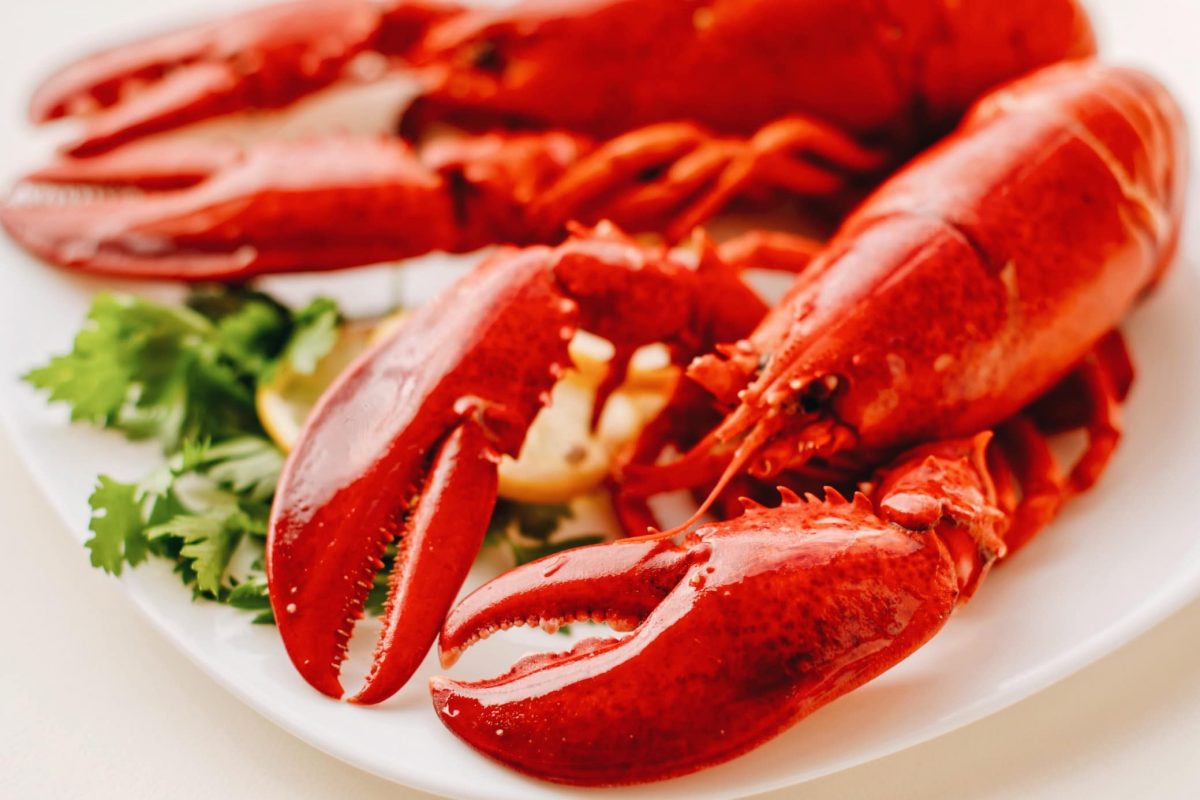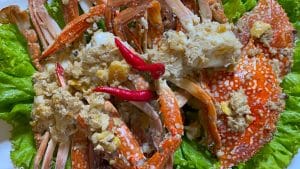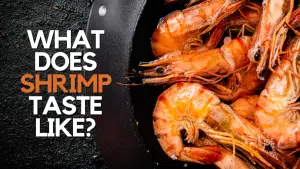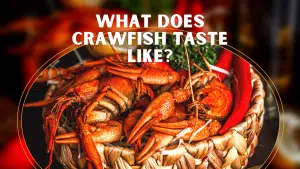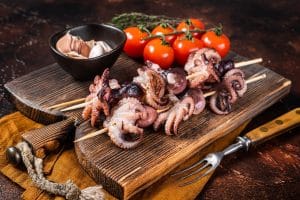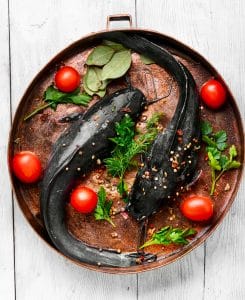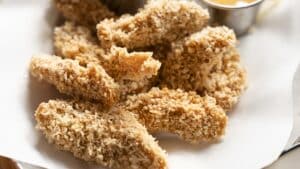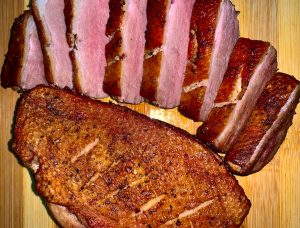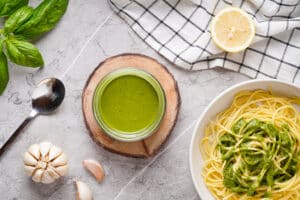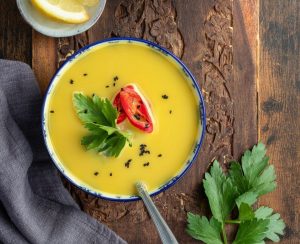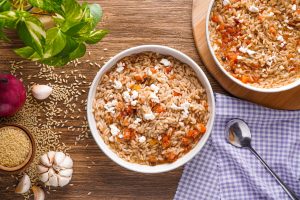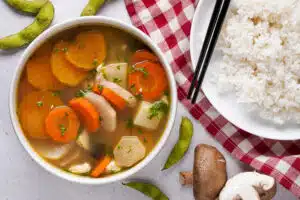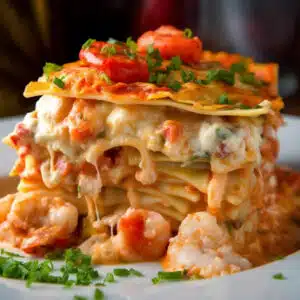What Does Lobster Taste Like?
Important Note: When you buy through our links, we may earn a commission. As an Amazon Associate we earn from qualifying purchases. Content, pricing, offers and availability are subject to change at any time - more info.
Whether lobster conjures up images of luxurious feasts or humble lobster rolls from a shellfish shack, this gorgeous seafood is well worth trying. If you’ve never eaten lobster before, it’s hard to imagine the flavor. What does lobster taste like?
Lobster tastes sweet and succulent, with a buttery flavor and tender consistency, like crab and shrimp. The flavor of the lobster will depend mainly on the kind of lobster it is (clawed or clawless), which part of the lobster you’re eating (tail, claws, liver, or roe) and how the lobster is cooked.
Lobster is an expensive food item, so you might want to read on to find out if you should “shell out” the cash before eating it. If you enjoy the flavor of shrimp and crab, you’ll probably enjoy lobster, as it has a similar sweetness and texture. Just don’t imagine that it tastes like chicken!
- What Does Lobster Taste Like?
- What Do Different Kinds Of Lobsters Taste Like?
- What Do Different Lobster Recipes Taste Like?
- So, What Does Lobster Taste Like?
What Does Lobster Taste Like?
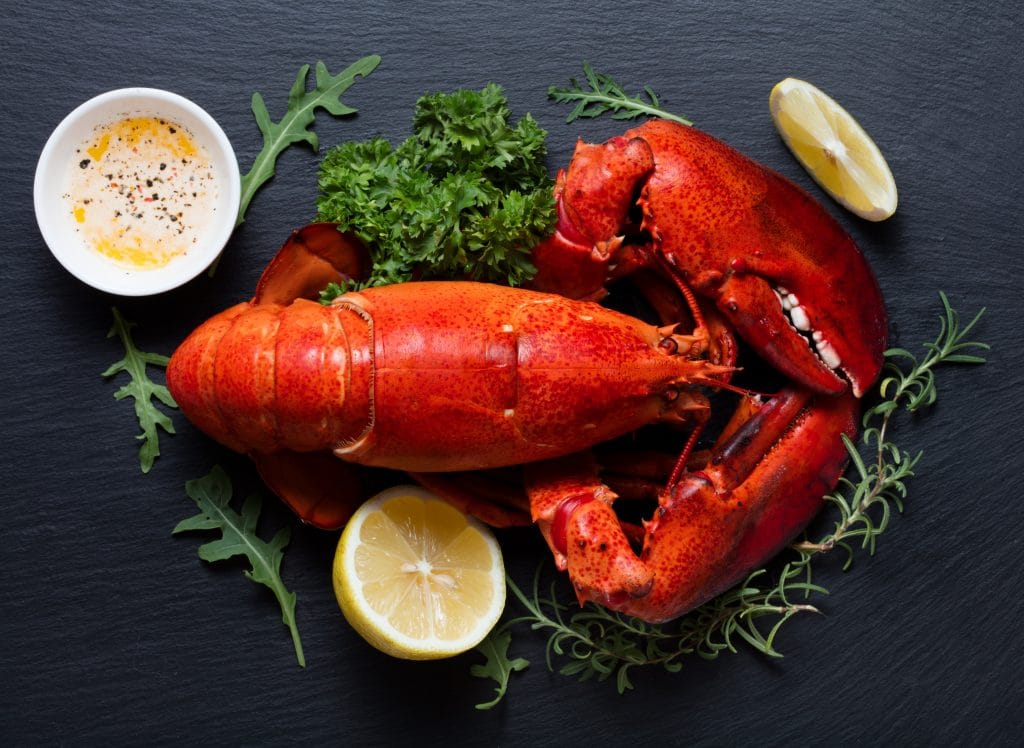
Lobster has a unique flavor among seafood, partly explaining why this ingredient is so pricey and regarded as a luxury item.
Descriptions of lobster’s flavor vary. Some foodies describe lobster as “sweet,” while others say it tastes savory, yet others say it’s like the ocean. Lobster meat is mildly flavored and salty, without the overpowering fishiness of other seafood.
Other descriptions of lobster include the words “tender” and “succulent,” emphasizing the texture of the meat rather than the actual taste. The almost spongy consistency of the lobster is why you can use monkfish instead of lobster to make “mock lobster” dishes.
The descriptions differ because lobster’s flavor depends on the kind of lobster you are eating, which part of the lobster you’re eating, and how the lobster was prepared.
Because of its delicate flavor, lobster will take on the taste of ingredients it’s cooked with rather than overwhelming the palate. So, lobster will often taste like the sauce or topping it’s served with.
To understand why lobster tastes as it does, let’s look at the different kinds of lobsters and how they are prepared.
What Do Different Kinds Of Lobsters Taste Like?
Lobsters are a kind of marine crustacean, somewhat like a giant shrimp, with a hard shell. They live on the seabed and eat other small sea-living creatures (like clams) and seaweed.
There are several kinds of lobsters, but the two main categories are clawed and clawless lobsters. The meat is found in different parts of clawed and unclawed lobsters and will taste different.
Clawed Lobsters
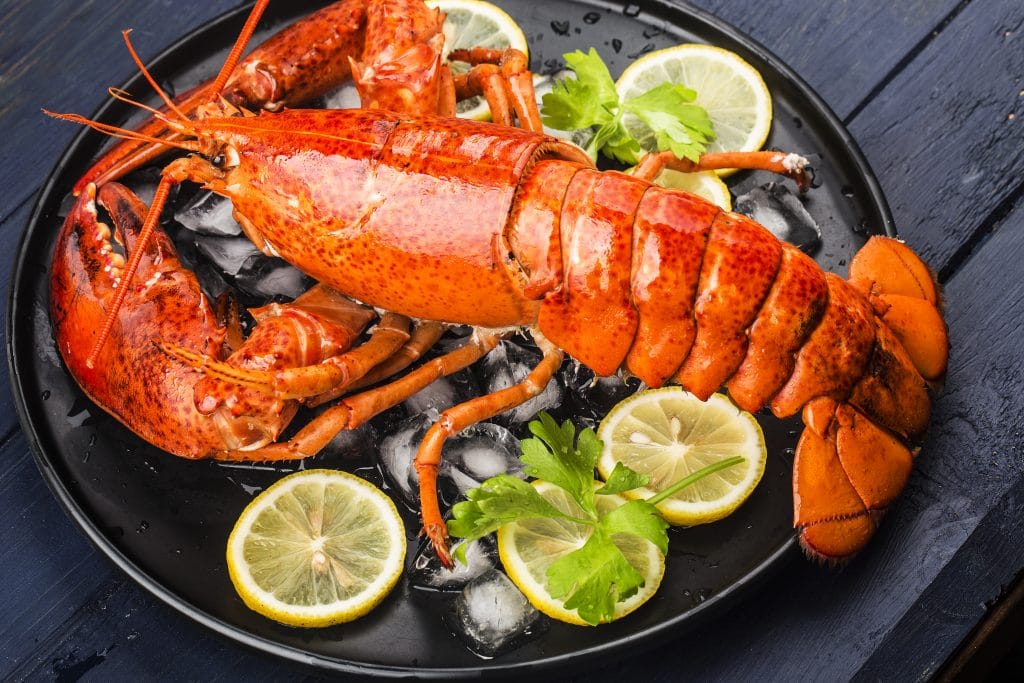
Most lobsters found in North America are clawed lobsters, known as Maine, American, or Northern lobsters (scientifically called Homarus americanus). These lobsters have two large meaty claws and four sets of legs, as well as a large, muscular tail. They are usually blackish or brownish green with red spots and weigh anything from half a pound to five pounds. These are the lobsters you’ll see in restaurant pictures – they turn red during cooking.
Clawed lobsters carry their meat in the tail, claws, and legs. The meat in the tail of these lobsters tends to be slightly spongy, with a sweeter flavor than clawless lobster, more like a shrimp or langoustine than a crab. The claw and leg meat is trickier to reach but has a richer and more intense flavor, so cracking the claws and sucking the goodness from the legs is worth the effort.
The younger the lobster, the more tender the meat. Small lobsters weighing up to two pounds are referred to as “chickens,” especially in New England, where they are popular.
You can also eat the tomalley, which is the soft, green liver found in the lobster’s body cavity. The tomalley has a more robust, slightly bitter taste and odd color, which puts some people off, but which chefs prize as it enriches sauces and soups with a lobster flavor. You can also serve tomalley on toast.
Female lobsters (hens) may also be carrying unfertilized roe or eggs (known as coral), which have their own unique, fishy flavor. As females carry the eggs for up to two years, there’s a good chance of finding eggs in a hen lobster. These deep red eggs turn pink when cooked and are regarded as a delicacy. A paquette is the French term for a hen lobster with a fully formed egg sac and is the most highly sought-after lobster meat.
Clawless Lobsters
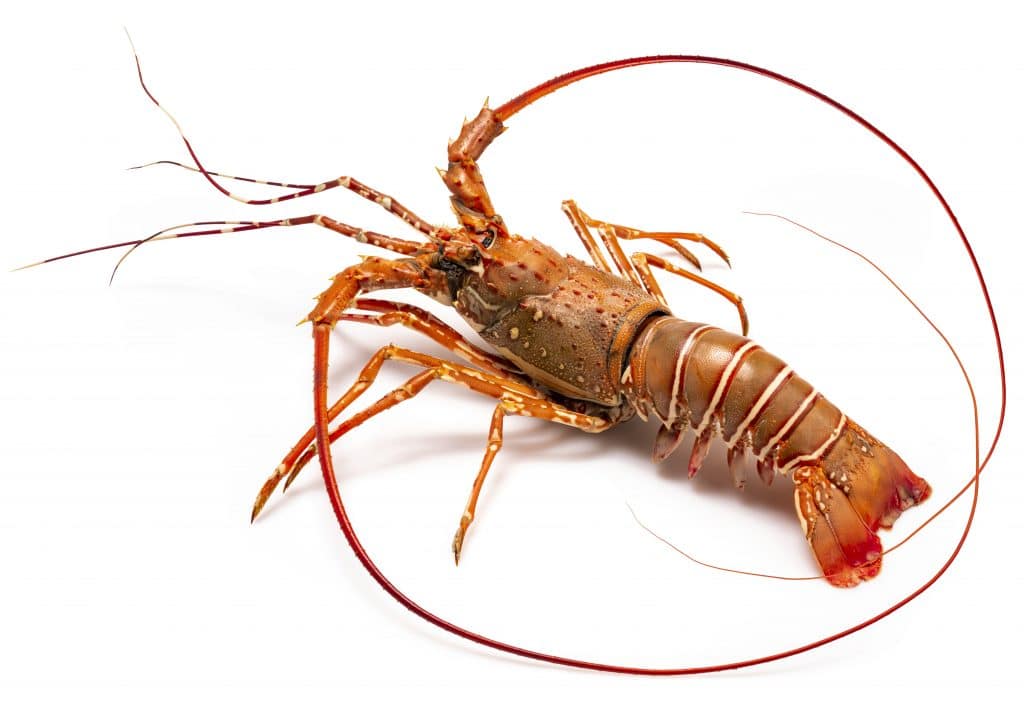
Clawless lobsters, including crawfish (crayfish) and spiny lobsters, also have ten legs and thicker tails containing all the edible meat. These pale yellowish-brown lobsters are common in the warmer waters of Florida, southern California, the Caribbean, and off the coast of Africa. You’ll often find these lobsters sold as tails only, especially frozen, and have more meat on them.
These lobsters have a more robust, meatier flavor, more like crab, with a similar firm yet flaky texture as all the meat is in the tail. The taste is less sweet than that of the Maine lobster, so check what kind of tail you are purchasing.
Because these lobsters are widespread, their origins do influence their flavor. Mediterranean lobsters tend to be saltier, while their Caribbean cousins are sweeter, and Californian spined lobsters a happy medium of salt and sweet.
Like crabs, these lobsters lose their shells and enter a soft-shell stage. However, soft-shell lobsters are not particularly tasty or prized, and most restaurants will steer clear of them as their meat is not any more delicious and is more watery than usual. Unlike crabs, you can’t eat the shells of soft-shell lobsters.
What Do Different Lobster Recipes Taste Like?
The way a lobster tastes will also depend on its cooking. Some standard cooking methods bring out the best of this unusual seafood and complement its unique features: boiling, grilling, steaming, baking, barbequing, and frying.
The lobster flavor will also depend on the recipe since lobster meat takes on the taste of other ingredients. Some common pairings are butter, lemon, cream, white wine, and garlic, as these flavors highlight the best lobstery-ness.
Lobster also tastes best fresh, with the flavor of the sea still infusing the meat. Chefs recommend buying live lobsters to make sure they are as fresh as possible – limp lobsters or “sleepers” will have mushy, unappealing meat. If you can’t get fresh lobster, frozen lobster tails are readily available and are excellent in many of the recipes below.
Some people complain that lobster meat can be tough and stringy – this is the result of overcooking lobster, not the size, age, or type of lobster. Lobster only needs about 10 minutes of cooking time per pound.
Grilled Or Barbequed Lobster
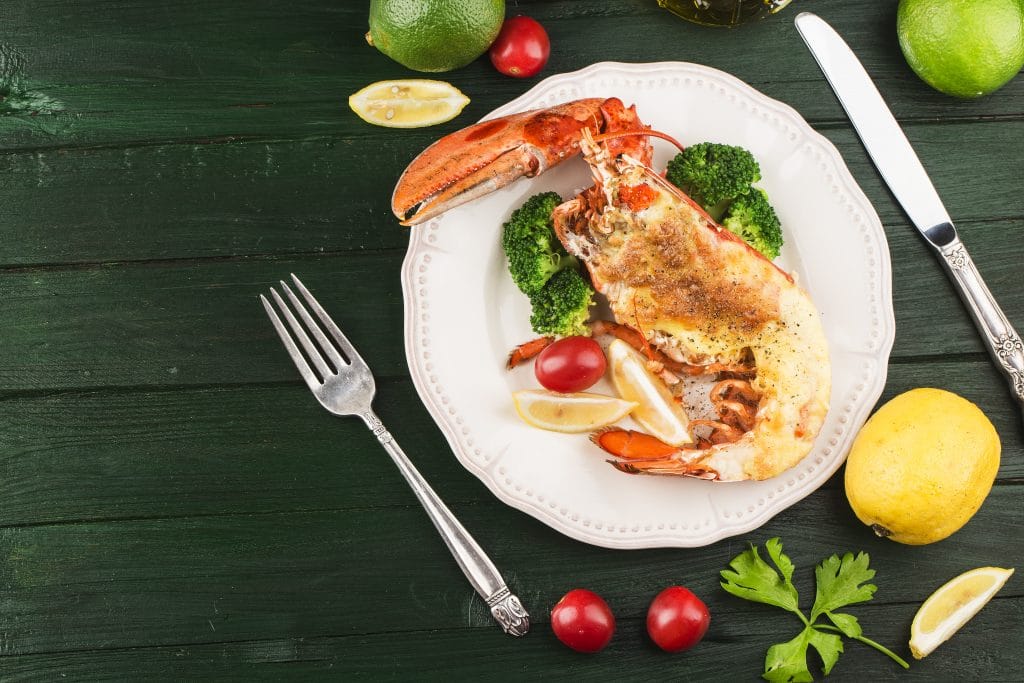
Grilling or barbequing lobster allows the meat to take on a smoky flavor and is perfect for freshly caught, whole lobster. Use a hot grill as the lobster cooks very quickly.
Lobsters are best grilled with the body and tail split open, allowing the charcoal smokiness to permeate the meat better. Grill the lobster whole, including the claws (cracked open to reach the flesh), tomalley, and roe.
All a grilled lobster needs to bring out the rich sweetness of the meat is black pepper, salt, olive oil, and garlic, with a little squeeze of lemon to serve.
Boiled Lobster
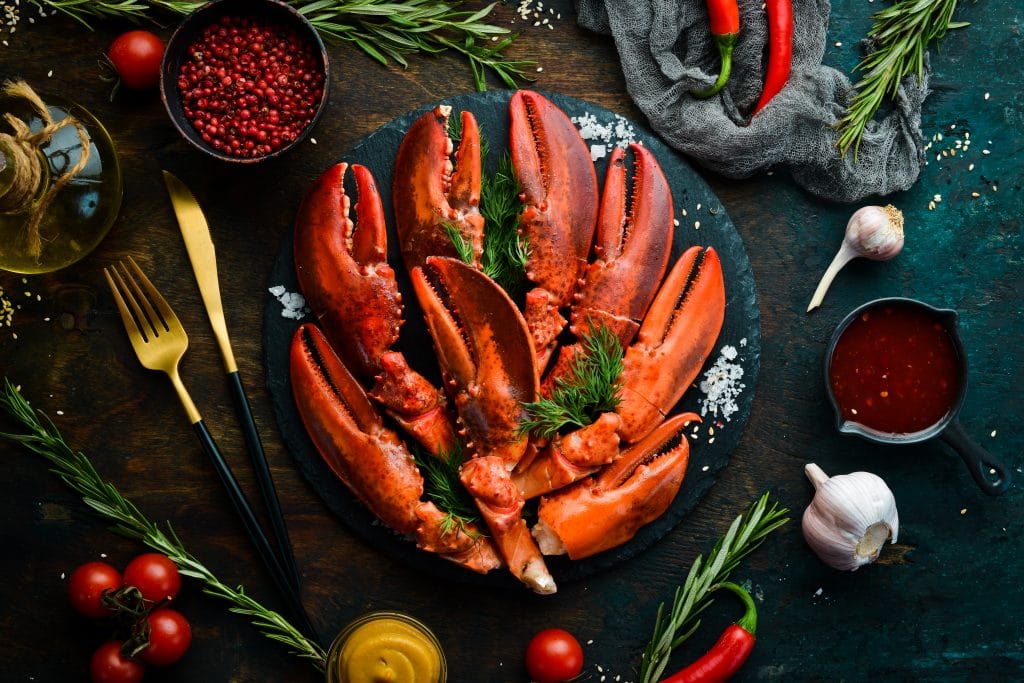
Boiling is one of the best and most convenient methods of cooking lobster is to boil it. This simple preparation method allows the flavor of the lobster to shine and retain the freshness and saltiness of the sea. Boiling is a suitable method of cooking fresh lobster.
Boiled lobster is soft and flaky, with a slightly chewy bite, while the cooking liquid forms a delicious broth which you can use as a base for a seafood bisque or risotto.
The best accompaniments for boiled lobster are melted butter and lemon wedges. The lobster’s meat is buttery in itself, and the acid of the lemon highlights this.
Steamed Lobster
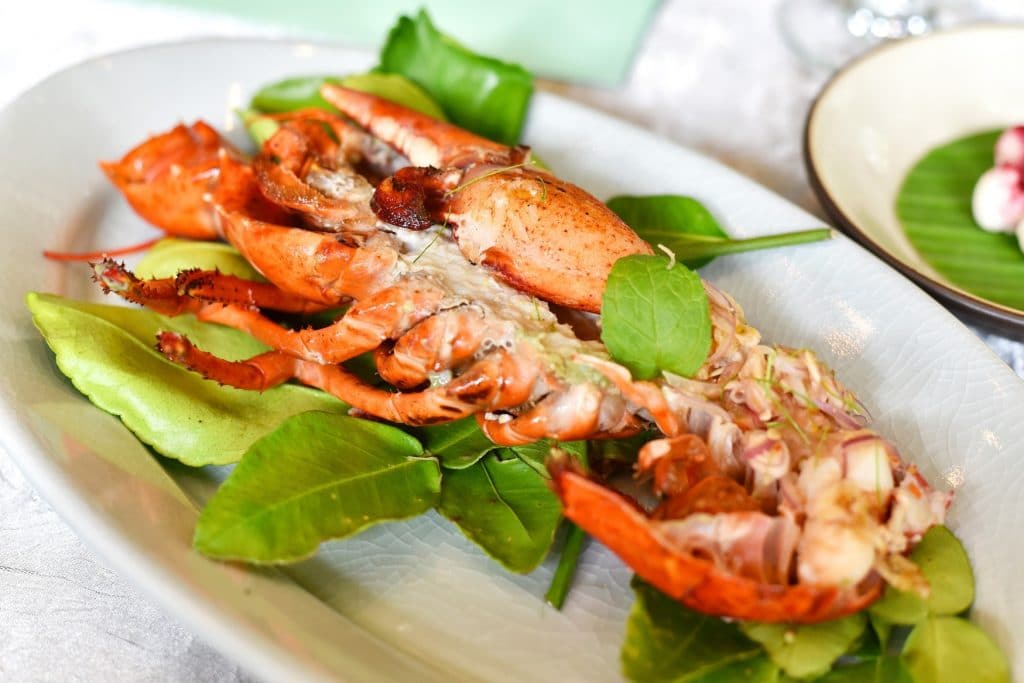
Steaming lobster is another way of letting the flavor of the meat come to the fore. Minimal seasoning is necessary apart from salt, and the meat cooks even more quickly than boiling.
The liquid from steaming also forms a tasty broth, as with boiled lobster.
Serve with melted butter and lemon to enjoy the mellow lobster flavor.
Lobster Roll

A classic recipe, the lobster roll, is a casual way of eating steamed or boiled lobster as a sandwich. Dress lobster rolls with butter and lemon, mayonnaise and sour cream, or even curry sauce and boiled egg.
A version of the lobster roll called the lobster melt includes melted parmesan cheese, which adds a zestiness to the sandwich.
Baked Lobster

Baking is a good way of cooking lobster as it ensures that the lobster remains moist. It is a great way to cook frozen and thawed lobster tails, or a whole, split lobster.
The flavors are simple, with the lobster topped with breadcrumbs, garlic, salt, pepper, parsley, and olive oil. The lobsters then bake in white wine, which gently steams and infuses the meat. The breadcrumbs soak up the lobster juices, which are at the forefront of this delicious recipe.
Lobster Thermidor
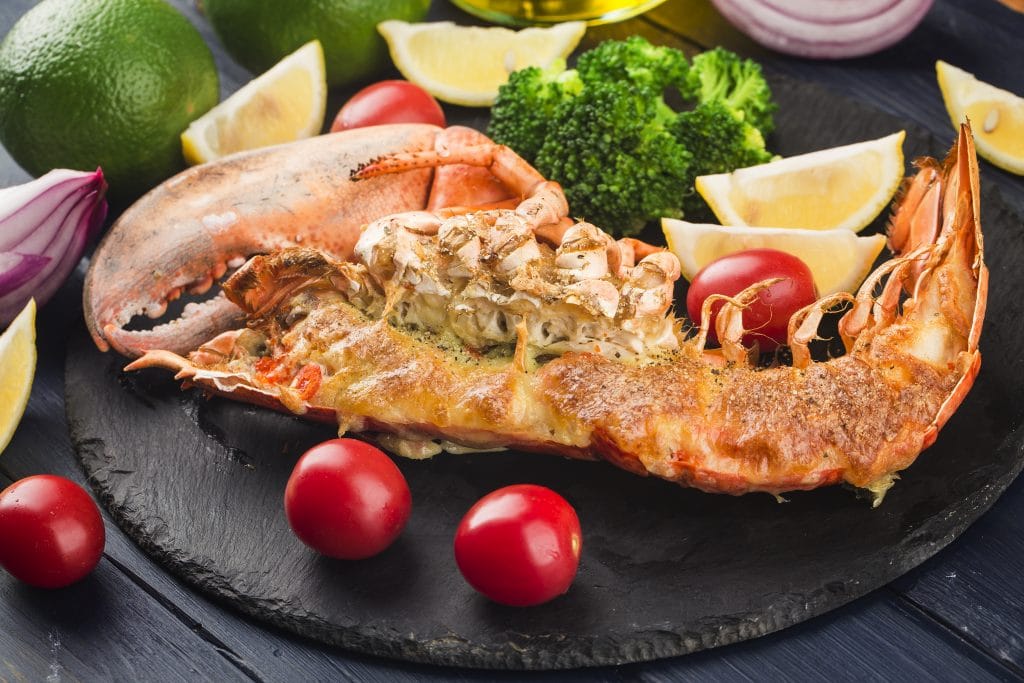
One of the most famous lobster recipes, Lobster Thermidor, is characterized by a rich, luxurious sauce poured over boiled lobster.
Lobster Thermidor is a good idea if you have lobster pieces rather than a whole lobster, as you will chop up the lobster anyway, cover it with sauce, and broil it.
Thermidor includes ingredients like spinach, cream, sherry, mustard, and Gruyère cheese, which are intense flavors that should highlight rather than overwhelm the lobster’s flavor.
Lobster Newburg
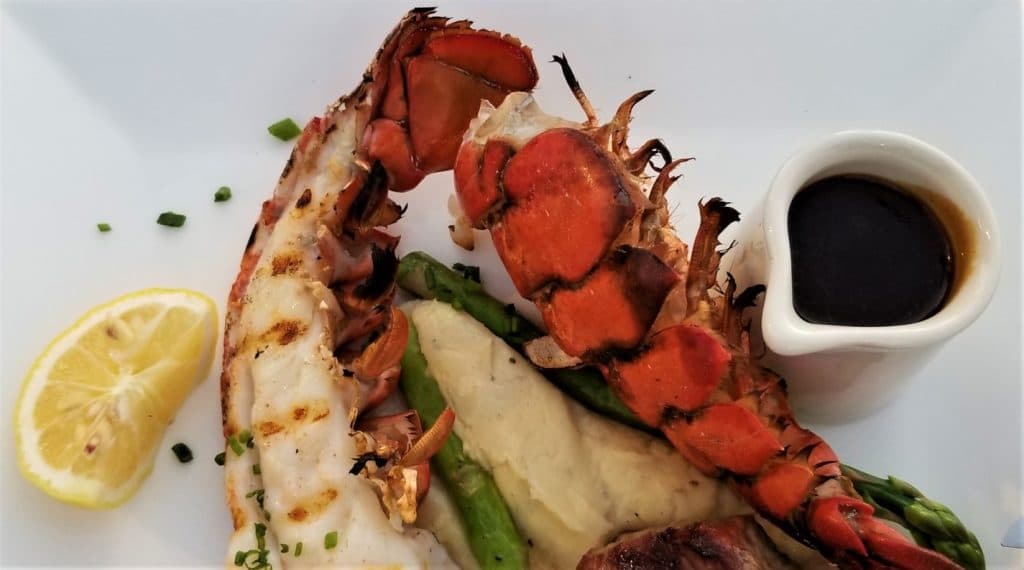
This recipe is a classic American dish and uses all the parts of the lobster to create succulent meat topped with a robustly flavored sauce, made with the tomalley (liver) and coral (roe).
To make Lobster Newburg, fry the meat from the tail (and claws) with shallots, tomato, paprika, mushrooms, white wine, cream, and butter. The lobster shells and innards flavor a sauce with eggs and cream seasoned with tarragon and parsley.
Like Thermidor, the lobster shines amid the rich flavors, with the sweetness of the sherry shallots and mushrooms making the lobster sweeter than ever.
Lobster Bucatini
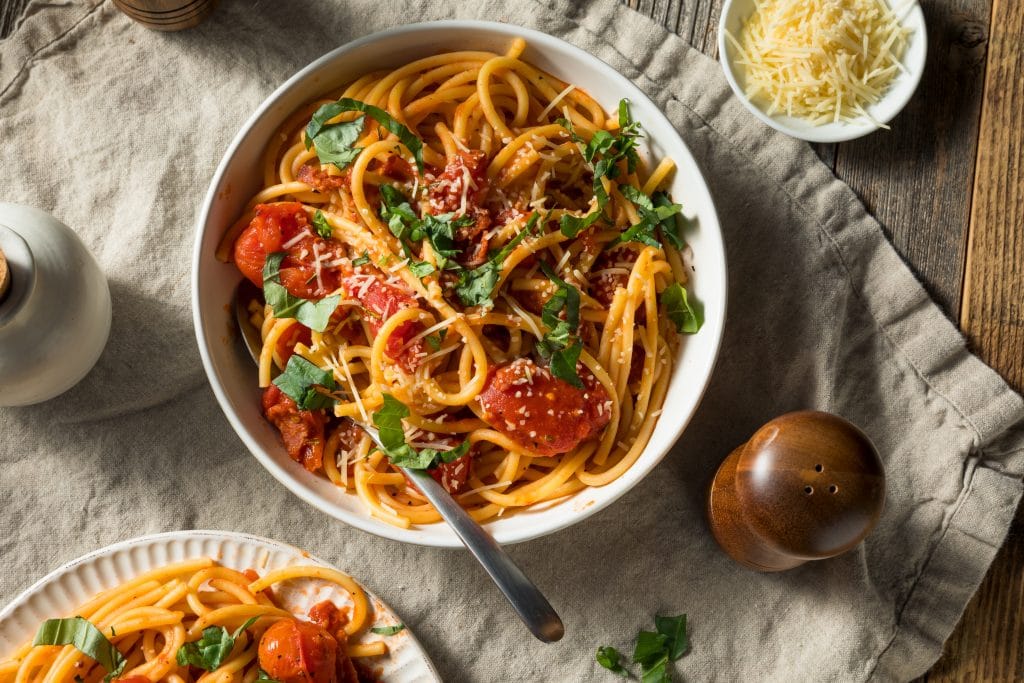
Cooking lobster with pasta is a tasty way of using frozen lobster tails. This recipe combines lobster with tomatoes and chili, a great pairing that lets the sweetness of the lobster play off against the acid and bite of the other ingredients. Check out the recipe here: Spicy Creamy Lobster Bucatini.
Lobster Bisque
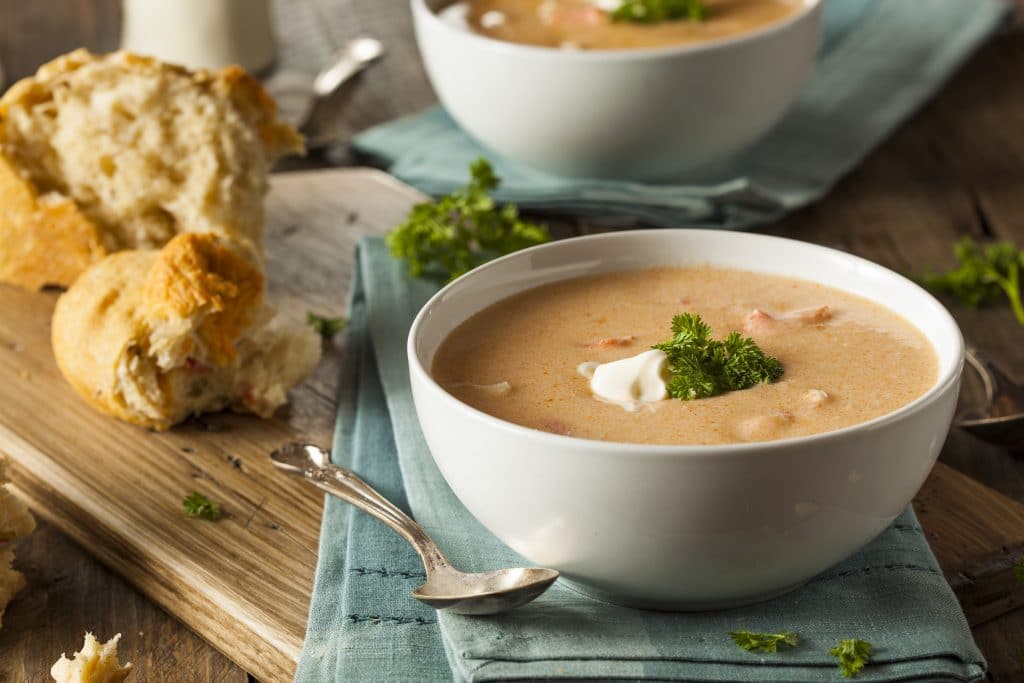
Lobster bisque is a delicious, velvety seafood soup made with lobster and cream. Despite being made with wine and beef stock, it has an intense seafood flavor. The flavor comes from cooking the entire lobster, including the shells, which infuse the soup with potency.
Other ingredients of a lobster bisque include onions, carrots, celery, tomatoes, herbs, and garlic, while the soup contains brandy and cream to thicken and enrich it.
Lobster bisque is usually a starter or appetizer, as it is very heavy.
Stirfried Lobster
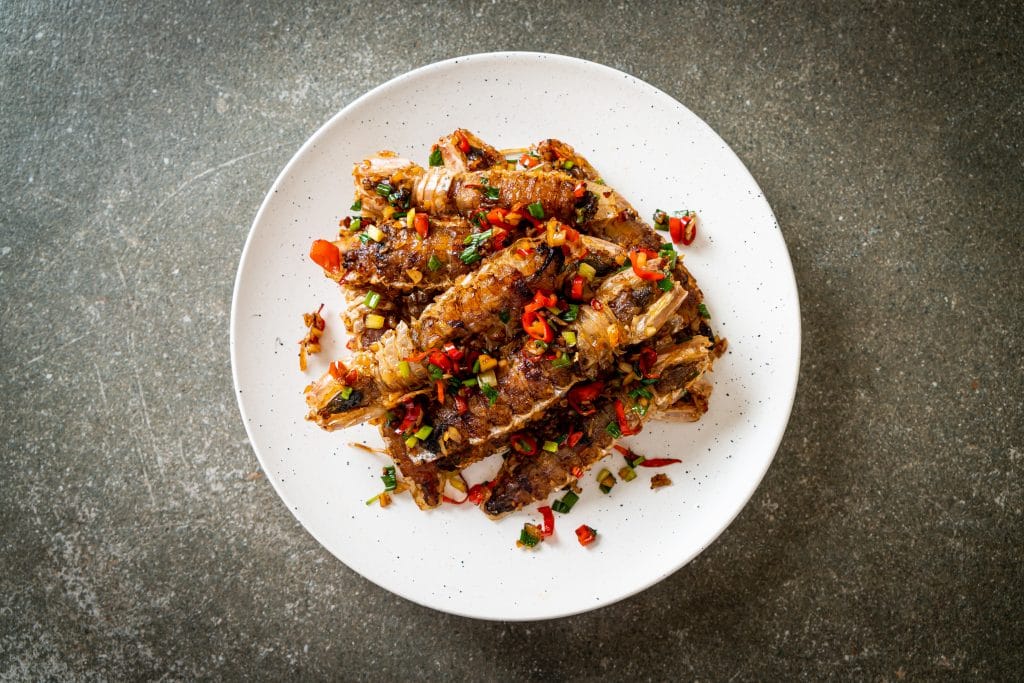
Lobster is delightful pan-fried, where the meat from the claws and tails is removed and fried with garlic, ginger, soy sauce, and oyster sauce. This Asian-style recipe often includes peanut or sesame oil, and these are the flavors that stand out as the lobster melts into the hot ingredients.
Pan-frying lobster gives the seafood a slight char, imparting a similar smokiness to grilling or barbeque. Because the meat cooks so quickly, you can use a very hot pan. Using a cooler pan can lead to overcooking and toughening this usually delicate ingredient.
Stirfried lobster is delicious served with a sprinkling of fresh chives and plain rice, as the other ingredients are robust.
If you’ve made some lobster and want to know if you can reheat it, take a look at Can You Reheat Lobster?
So, What Does Lobster Taste Like?
Lobster is the ultimate special-occasion food and well worth the price for the luscious, buttery meat. Whether you’re cracking the claws of a North American lobster or enjoying a crayfish tail, the flavor of lobster will never disappoint. Order that bisque or Thermidor next time you’re celebrating – or eat lobster on June 15, National Lobster Day – to find out what you’ve been missing.
